Microsoft Dynamics 365 Business Central (BC) continues to raise the bar for small and mid-sized businesses seeking a connected, cloud-first ERP. In 2025, Microsoft doubled down on AI-assisted work, agent automation, e-commerce integration and everyday usability. This article highlights the most significant improvements from Release Wave 1 (April–September 2025) and what’s planned for Business Central 2025 Wave 2 (October 2025–March 2026), providing practical insights from the official Business Central 2025 release notes on what’s available now, what’s in preview and how to get value from day one.
Key Takeaways
Microsoft Dynamics 365 Business Central 2025 Wave 2 introduces major AI-driven enhancements across finance, operations and e-commerce. Highlights include Sales Order and Payables Agents, advanced search, tighter Teams and Power Platform integration, and developer updates that streamline automation and compliance.
Not on Business Central Yet?
Microsoft is offering 40% off licenses for eligible Dynamics on-premises users through the Bridge to the Cloud 2 program. Contact us to see if you qualify.
AI-Powered Productivity with Copilot and Agents
If 2023–2024 were about introducing Copilot, 2025 is about letting AI do the busywork with human oversight.
Sales Order Agent (Email to Order Automation)
The Sales Order Agent reads customer emails, identifies the customer, drafts a quote, verifies stock, and once approved, converts it to a sales order. It keeps a transparent activity log so users can review or adjust steps before anything is posted. General availability is slated for October 2025, with previews already circulating this year.
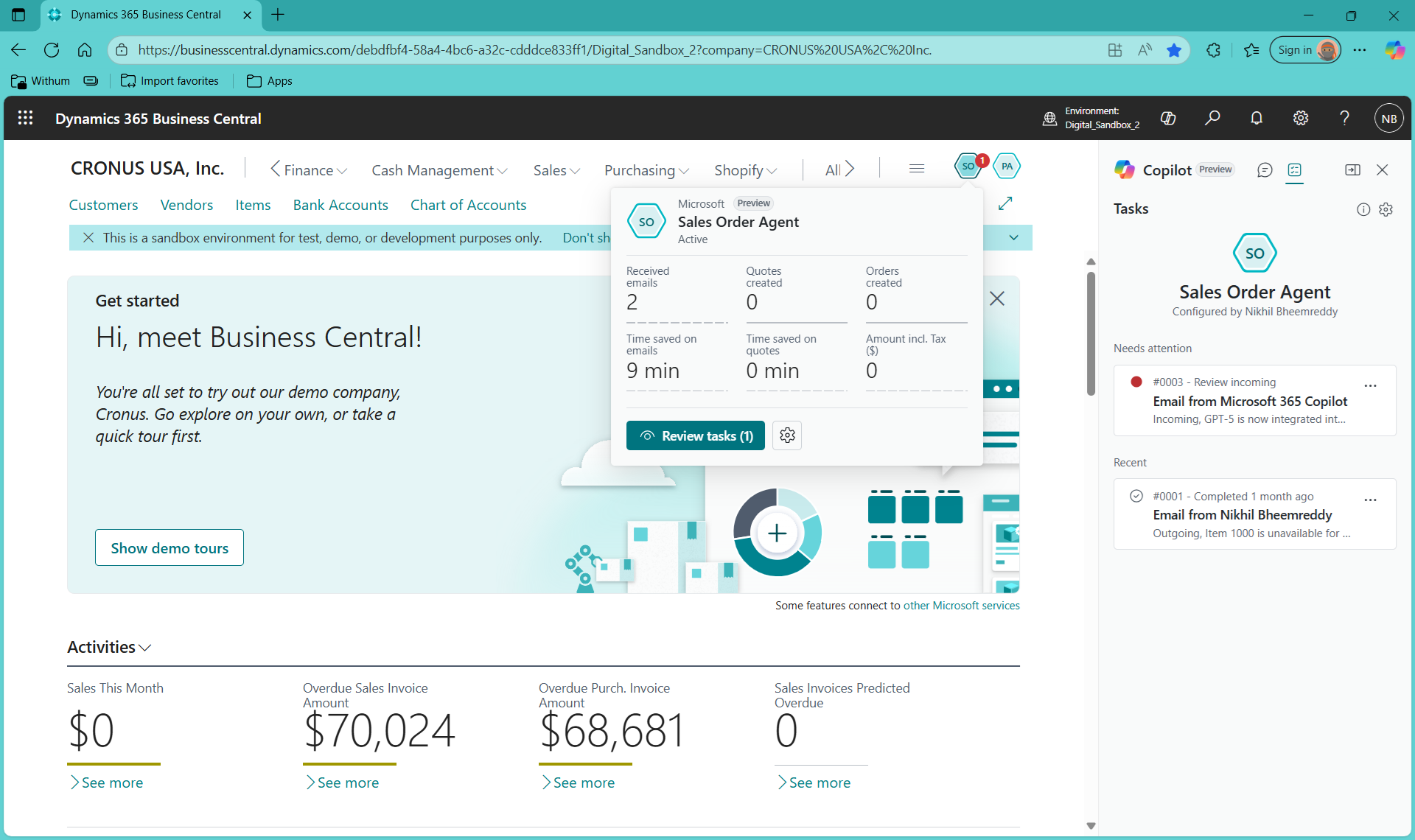
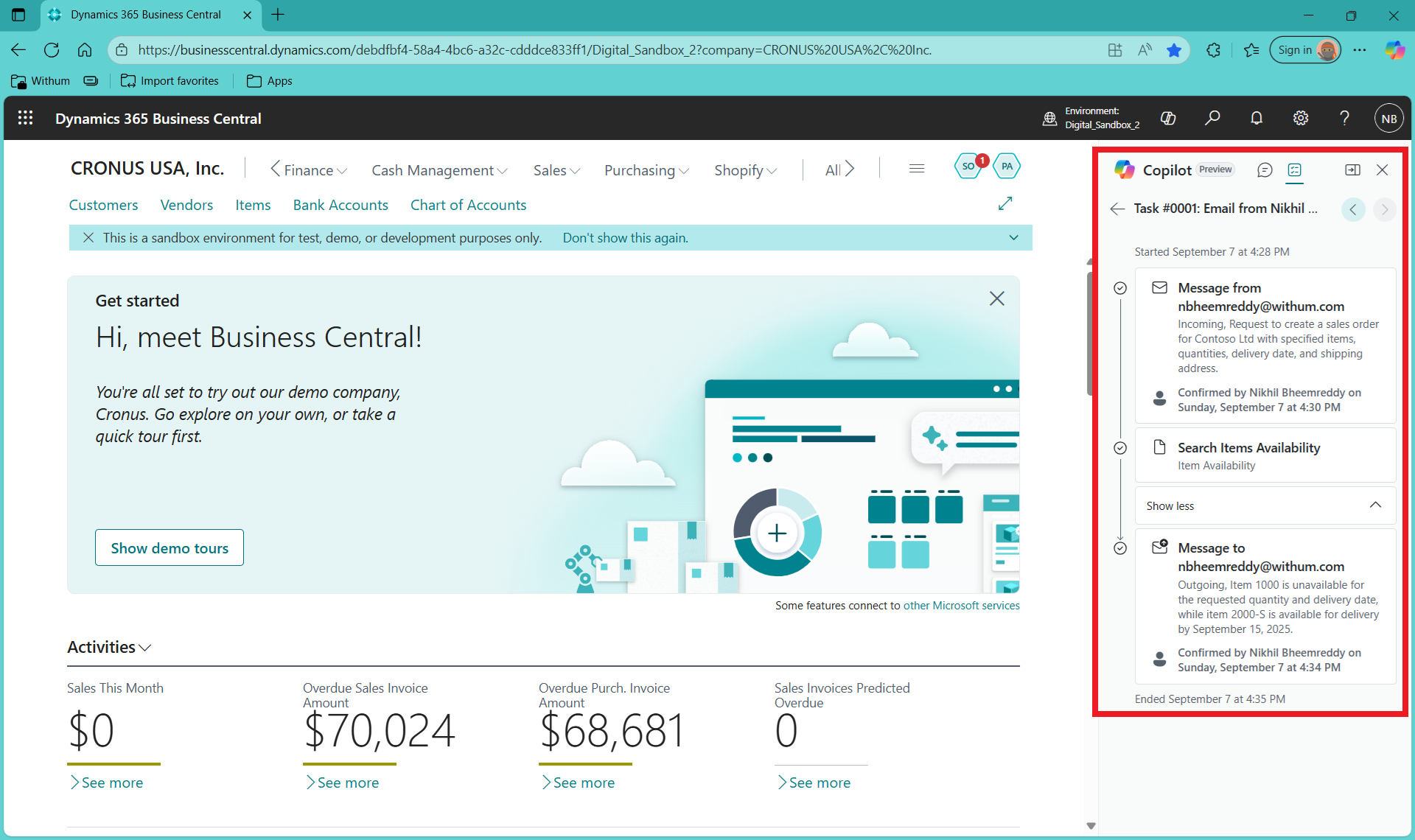
Why it matters: Many companies still spend hours manually keying orders from inboxes. By automating extraction, validation, and creation, this agent compresses cycle times and reduces errors, especially during seasonal spikes.
Note: AI agents such as Sales Order Agent and Payables Agent will be billed based on Microsoft’s Copilot usage model once generally available. Check the official pricing page for details.
Payables Agent (Invoice Matching, Draft Prioritization)
On the finance side, Payables Agent improves PO to invoice matching and surfaces contextual invoice drafts for review. Features such as confidence based prioritization and broader regional availability are targeted between November 2025 and early 2026.
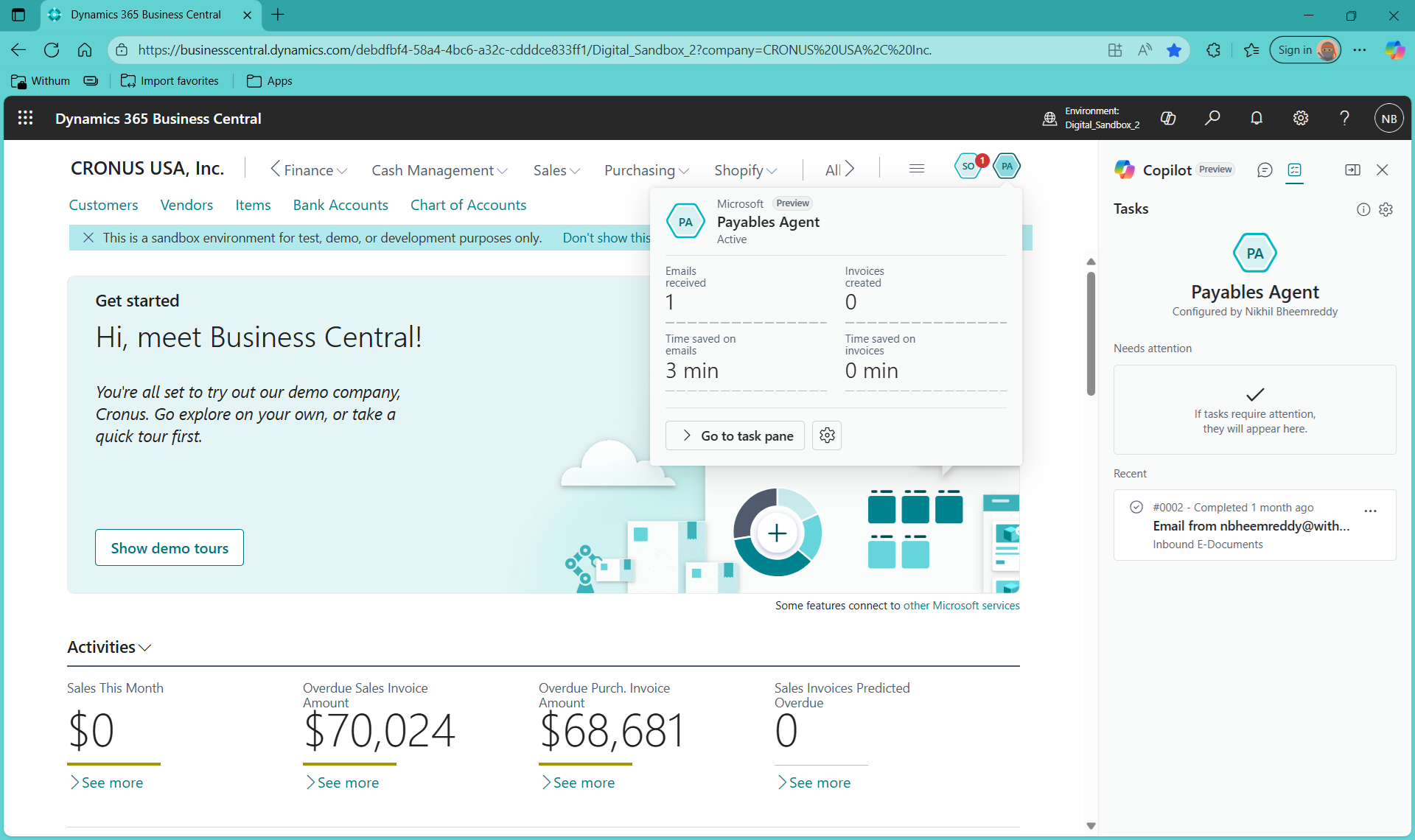
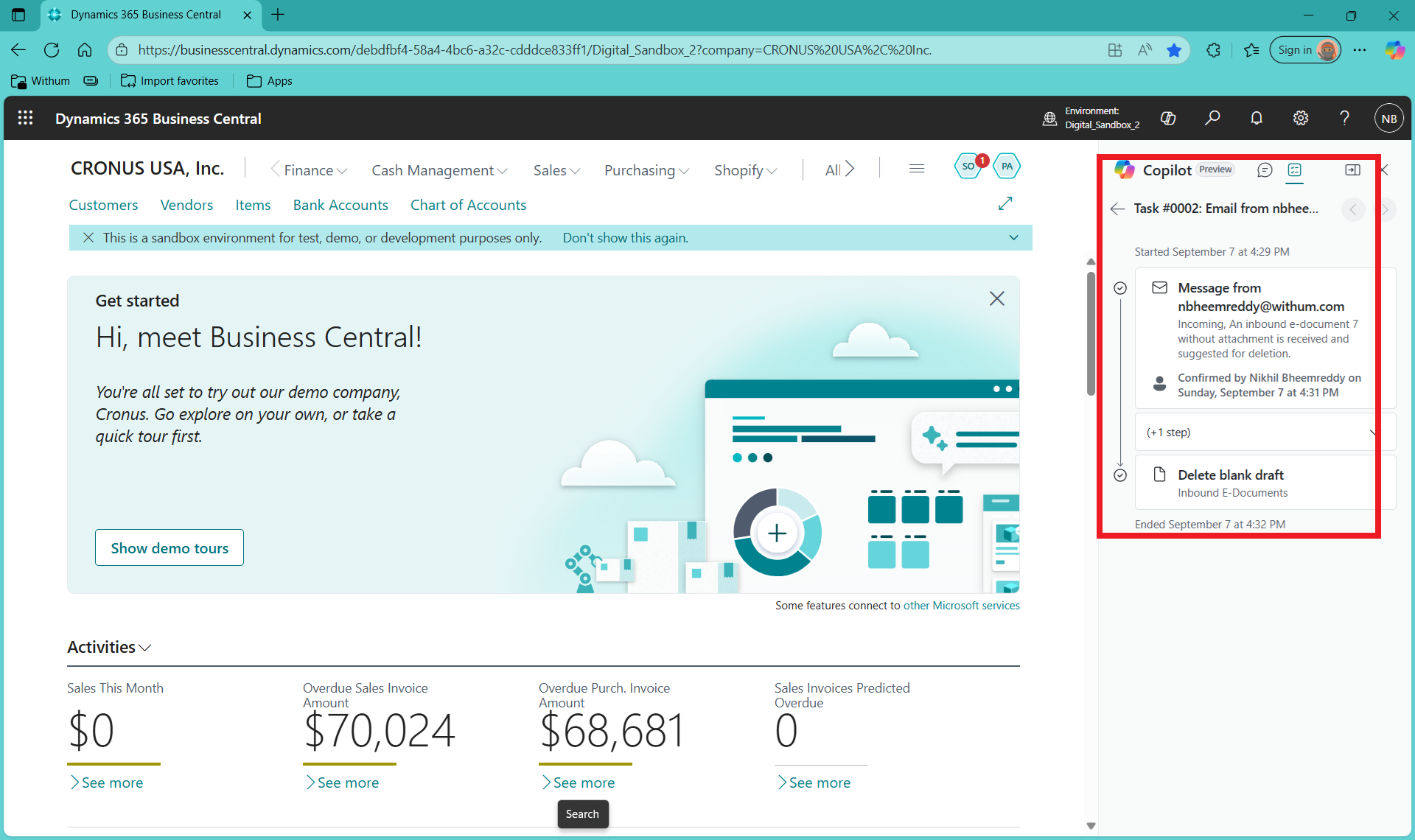
Why it matters: Matching details line by line is tedious and error prone. Bringing AI to AP reduces manual exceptions and gives teams back hours every week.
Copilot Gets Smarter Across the Board
Several quality-of-life Copilot updates round out the 2025 story:
- Guided add-on exploration: Copilot explains new ISV add-ons, fields, and processes so users ramp faster with fewer support tickets.
- Record summaries: A new FactBox provides quick, AI-generated summaries on records (e.g., items, orders) to speed decision-making.
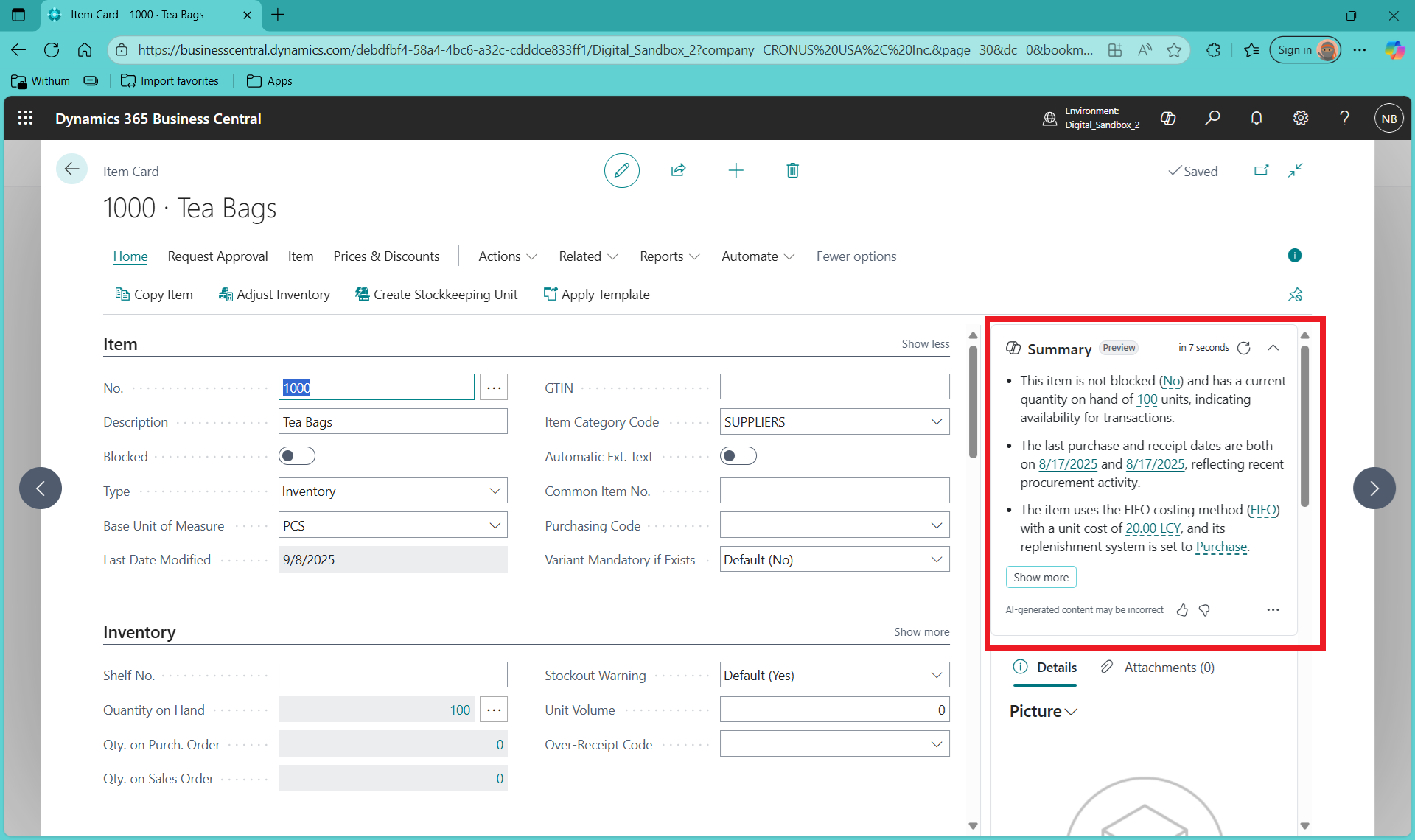
- Autofill improvements: Better field suggestions reduce clicks and data entry friction across common workflows.
- Sustainability journals: Copilot can suggest emissions estimates, helping teams progress ESG reporting without starting from scratch.
Tip: Treat agents like digital teammates. Start with low-risk use cases (e.g., draft quotes, draft invoice matches), keep users in the loop, and expand once you trust the outcomes.
Shopify and E-commerce Upgrades: Sell More, with Less Effort
If you sell online, Business Central’s Shopify Connector gets material improvements in the 2025 wave, including:
- Market-specific pricing synchronization (avoid pricing conflicts across regions)
- Staff to salesperson mapping for attribution and reporting
- Easier troubleshooting to speed incident resolution
These changes help finance and operations keep pace with marketing and e-commerce teams without brittle, custom plumbing.
Advanced Search and Navigation
The popular “Tell Me” search bar is getting advanced find capabilities that make it easier to surface pages, reports, and settings, especially in heavily customized environments. Expect this to hit general availability in October 2025 (with the usual caveat that Microsoft may adjust dates).
Why it matters: As your environment grows extensions, custom pages, ISV apps—navigation sprawl slows teams down. “Tell Me” cuts through the noise.
Deeper Integration with Microsoft Ecosystem
Business Central 2025 strengthens its native integration with Microsoft 365 (Outlook, Teams, Excel) and Power Platform, enabling:
- Real-time collaboration in Teams
- Automated workflows with Power Automate
- Embedded analytics through Power BI
This unified ecosystem ensures that data flows seamlessly across tools, reducing silos and boosting productivity.
Field Service Integration: Tighter Loop From Work Order to Invoice
For service-heavy organizations, Business Central 2025 Wave 2 updates enhance integration with Dynamics 365 Field Service:
- Seamless work order sync keeps usage and costs aligned
- Automated consumption and invoicing reduces reconciliation lag
- Inventory availability by location (warehouses, trucks) improves first time fix rates
Result: Technicians, managers and finance can work from the same truth with fewer spreadsheets and callbacks.
Developer and Admin Updates: Build and Govern with Confidence
Behind the scenes, 2025 brings additions that matter to admins, developers, and partners:
- Agent connectivity via MCP: Microsoft is enabling ways to connect AI agents to Business Central through the MCP server, opening the door for more sophisticated automations in the future.
- Ongoing localization and regulatory updates keep BC compliant in more countries and regions, which is critical for high growth firms.
- Evergreen upgrades continue: BC’s extension based model (AL) keeps customizations upgrade safe while you adopt new capabilities.
For ISVs and IT teams: Keep your app extensions current and documented. The more you rely on AL extensions (rather than modifying the base), the smoother your upgrade windows.
What’s Live Now vs. What’s Planned in Business Central 2025 Wave 2
Microsoft structures major Business Central updates in two half-year waves.
As of early September 2025:
- Available/preview now (Wave 1): Core Copilot improvements (record summaries, guided add-on help), e-commerce enhancements in motion, stronger Field Service integration, and various UX refinements.
- Planned for Wave 2 (Oct 2025–Mar 2026): GA for Sales Order Agent, advanced Tell Me, Payables Agent improvements, and expanded Copilot features (autofill, sustainability suggestions).
Reminder: Always confirm the current status in Microsoft’s Business Central 2025 Release Notes and What’s New pages, as delivery timelines can change and features may appear first in public preview.
How to Prepare for the Update
- Review the Release Plan for the exact status and region availability of features relevant to your org.
- Enable previews (where appropriate) in Feature Management and try them first in a sandbox.
- Document “guardrails” for Copilot and Agents for what tasks they can automate, what needs user approval, and who owns exceptions.
- Measure impact: Track time saved in Sales Ops and AP, order to cash acceleration, invoice exception rates, and error reductions.
- Iterate: Move from low stakes pilots to business critical processes once your audit and controls teams are comfortable.
Considering a Move From NAV, GP or Solomon?
A growing number of finance and operations teams are accelerating their move to Business Central to gain the benefits of cloud, evergreen upgrades and native integrations with Microsoft 365 and Power Platform.
- Lower TCO: Eliminate aging servers and manual upgrade projects
- Fewer integration gaps: Outlook, Teams, Excel, Power BI, and Power Automate “just work” together
- Future ready: Copilot and agent features arrive continuously with minimal disruption
If you’re still on legacy Dynamics platforms, a structured assessment can help you scope data migration, extension strategy, third-party add-ons and a phased rollout that reduces risk while delivering quick wins. Eligible Dynamics on-premises customers can also receive up to 40% off Dynamics 365 licenses through Microsoft’s Bridge to the Cloud 2 program. Contact Withum to learn if your organization qualifies.
Turning Business Central 2025 Wave 2 Features into Outcomes
New features only matter if they positively impact cash flow, working capital, and customer experience. Our team helps you translate the 2025 roadmap into tangible results:
- Sales Order Agent quick start: Configure, test with real customer emails, define human in the loop checkpoints, and measure time saved per order.
- AP automation sprints: Stand up Payables Agent previews, tune matching rules, and build an exceptions dashboard for controllers.
- E-commerce alignment: Map Shopify pricing and salesperson attribution to BC for accurate margin and commission reporting.
- Field Service to Finance: Make inventory availability actionable for technicians while auto syncing costs and consumption to BC.
- Migration planning: If you’re moving from NAV/GP, we’ll de risk the journey with a pilot company, data migration plan, and an extension strategy that stays upgrade safe.
Outcome to target in 90 days: 25–40% fewer manual touches across sales order processing and AP matching; improved DSO by tightening quote to cash; and real time margin visibility for e commerce channels.
Conclusion
Business Central 2025 Release Wave 2 represents a pragmatic leap forward: AI that automates tasks, agents that handle routine tasks, integrations that bridge operational gaps, and UX enhancements that boost productivity across teams. Whether you’re optimizing an existing BC footprint or planning a migration, now’s the moment to pilot these capabilities and turn them into measurable gains.
Authors: Kalpana Sivanandan, Lead, Business Process Automation | [email protected] and Nikhil Bheemreddy | [email protected]
Contact Us
Ready to put the latest Business Central features to work? Contact our Business Central Consulting Services Team to plan your upgrade or migration.





